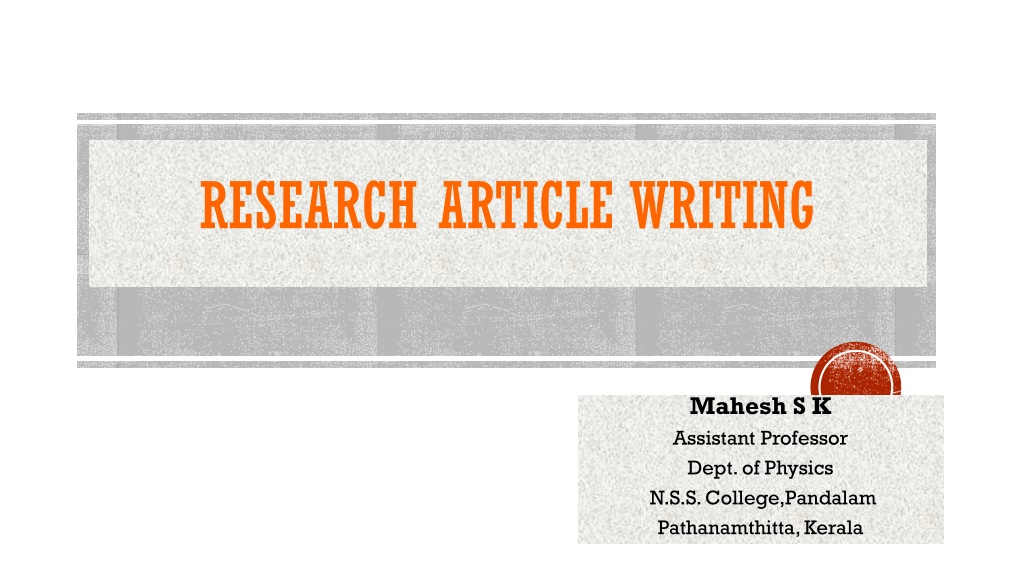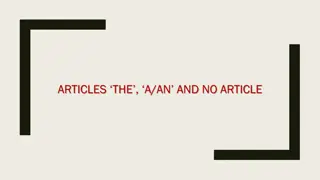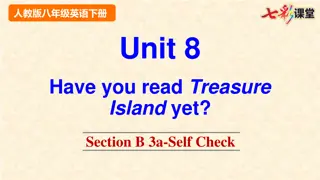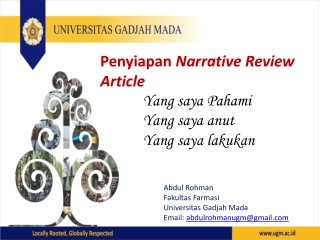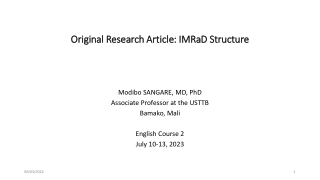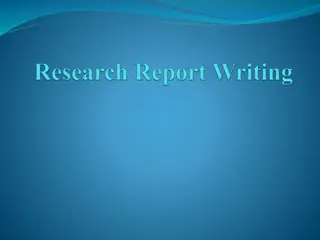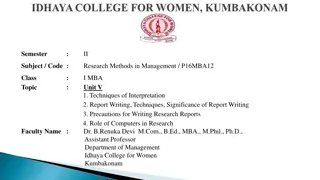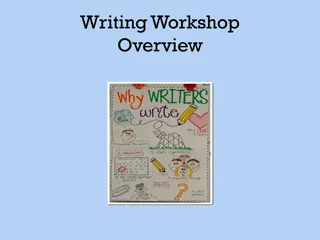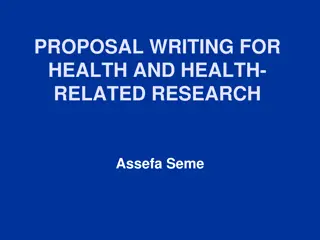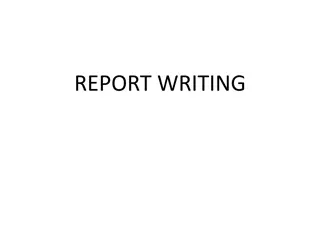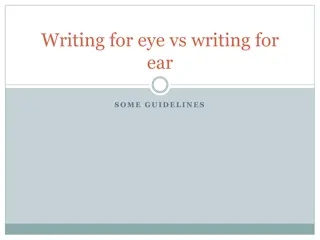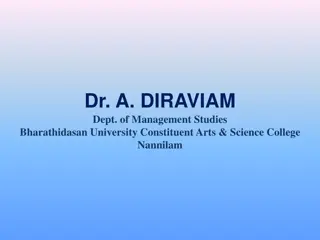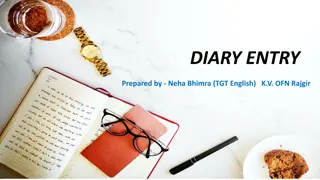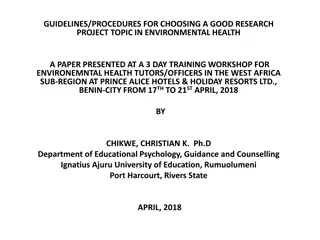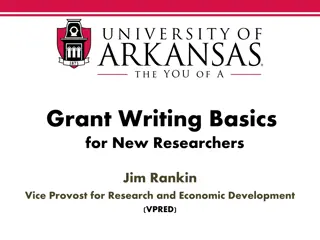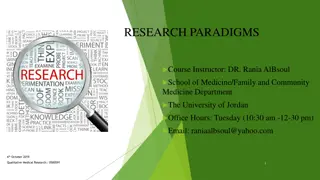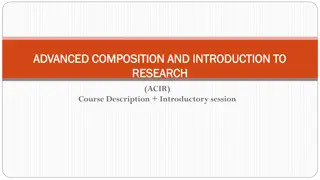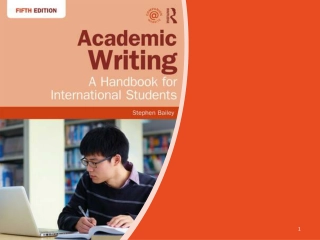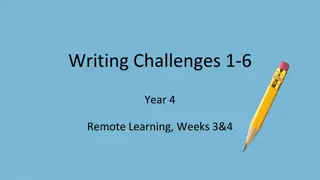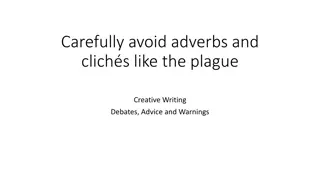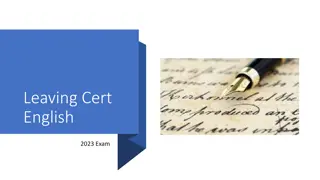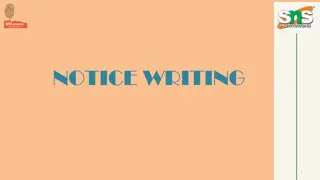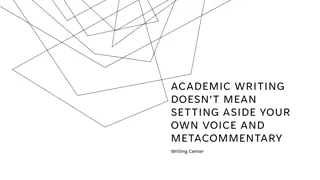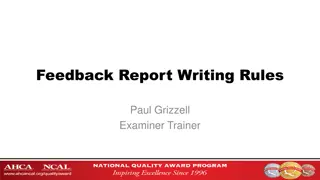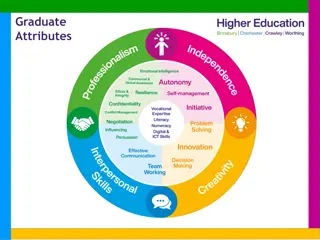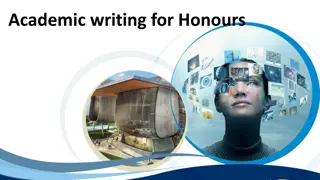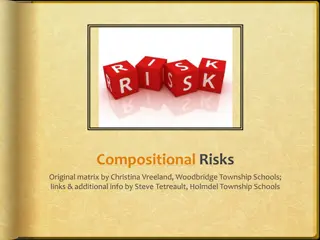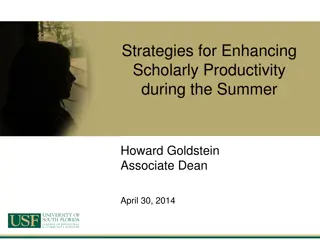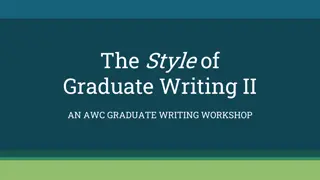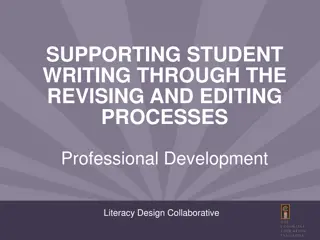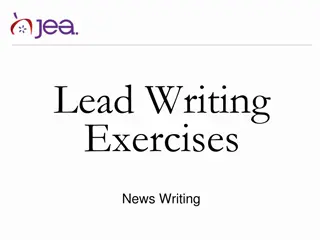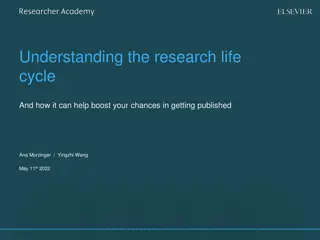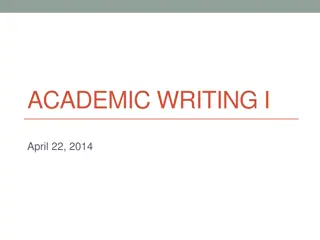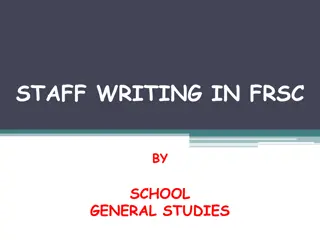Guide to Effective Research Article Writing
Discover the importance of publishing research articles, types of articles to choose, selecting the right journal, and mastering the art of scientific writing. Overcome common difficulties faced during publication and gain insights into manuscript preparation and journal selection.
Download Presentation

Please find below an Image/Link to download the presentation.
The content on the website is provided AS IS for your information and personal use only. It may not be sold, licensed, or shared on other websites without obtaining consent from the author. Download presentation by click this link. If you encounter any issues during the download, it is possible that the publisher has removed the file from their server.
E N D
Presentation Transcript
RESEARCH ARTICLE WRITING Mahesh S K Assistant Professor Dept. of Physics N.S.S. College,Pandalam Pathanamthitta, Kerala
OUTLINE OF PRESENTATION Why to publish and what are the difficulties? Which type of article I choose? Which journal? Objectives Writing a manuscript Publication in journals Conclusions 2
WHY PUBLISH AND WHAT ARE THE DIFFICULTIES? Why to publish? It leaves a record of research and receive due recognition for ideas and results. It helps in receiving expert feedback on results and discussion. 3
WHY PUBLISH AND WHAT ARE THE DIFFICULTIES? Difficulties Lesser novelty and scientific interest. Experiments do not work positive 4
TYPE OF ARTICLES Communications: brief reports of data from original research that the authors believe will be interesting to many researcher. Original Research: publish full reports of data from research. Review Articles: comprehensive summary of research on a certain topic, and a perspective on the state of the field. Methods: present a new experimental method, test or procedure. 5
JOURNAL TYPES Publishes General science: Eg. Science, Nature etc. Publishes broad subject: Eg. Chemistry an An Asian Journal, Journal of basic and applied zoology etc. Publishes specific area of a branch with specific scope: Eg. Journal of catalysis, Corrosion science, Aquatic botony etc. Publishes only communications: Eg. Chemcomm, Physics letters A etc. Publishes only reviews: Eg. Chemical review, Computer secience review etc. 6
OBJECTIVES To give an insight to the beginners for effective writing of an article and steps for publishing a research output. 7
ART OF SCIENTIFIC WRITING Most articles have a structure of IMRaD and its variations Title: Title of article should summarize the main theme of the research and reflects its contribution to theory. Author name and affiliation: Author names and affiliation to be given. Multiple affiliations to be specified. Corresponding author to be provided. Abstract: Known as summary 100-150 words. Focus on scope, key problem, method, key findings and applications Key words: Regarding the research. Important for searching online. 8
Introduction: Importance of the problem Literature review and status of problem, limitations Need of present study, how it overcome present gap Objectives Additional statement that justify study Methods: information about how the work has done Helps one to reproduce results Transparency in method Novel method should be given in detail Results: Evidence to support objectives Represent by figure, table or text Table helps in showing raw or processed data Figure helps in showing overall trend and comparison Figures must be self explanatory Do not include too much data in figure 9
Discussion: explain the results and correlate to problems discussed in introduction Refer to the main purpose of study Explanation of findings Limitation of study Recommendation on future aspects Conclusions: summary of the paper Do not repeat abstract Show how the work advances from the present knowledge Provide scientific justification of work Acknowledgments: Feel free to acknowledge Funding agency Outsourced work Valuable inputs 10
References: all the works that has been cited in manuscript Each journal has its own style Two types Citation-sequence: reference are listed in sequence in which they first appear in text. Eg: A work by Lazer is number 32 in text will have reference at 32 Name-year: text reference consist of surname of the first author followed by year of publication. References: Give complete author list: no et al in reference Some common styles of references: Author name, Journal name, volume, year, page no. Author name, title, Journal name, volume, year, page no. Author name, year, journal name, volume, page no. Author name, title of the book, year, Publisher, page no. Abbreviate journal name as per standard: eg: Journal of Catalysis as J. Catal. and not Jour. Cat., J. Cataly. Etc. 11
Key parts a reader may be interested Many journals provide Graphical abstract: many journals ask for a graphical abstract Figure with 4-5 bullet points Should specify the theme and key findings of the work Highlights: 3-4 bullet points describing the work Micro presentation: presentation in 2 minutes PowerPoint with audio describing the work http://www.sciencedirect.com/science/article/pii/S0926860X14000040 12
Publishing an article Choose a journal Prepare manuscript as per guidelines : Use if a template is available or LaTex, MS Word Get grammatically corrected check for plagiarism - Turnitin Cover letter explaining the importance of the work and conflict of interest List of reviewers Revision of manuscipt Thoroughly go through the reviewer comments Write a rebuttal Cover letter for revision Acceptance 13
CONCLUSIONS A well organized writing increases probability of acceptance of manuscript Always stick on to the guidelines of journals Answer reviewers comments Bibliography 1. Writing Scientific Research Articles: Strategy and Steps, M. Cargill, P. O Connor, 2009, Wiley-Blackwell. 2. R. J. Hoogenboom, R. . Manske, Int. J. Sports Phys. Therapy, 7 (2012), 512-517. 3. https://www.elsevier.com/connect/11-steps-to-structuring-a-science-paper-editors-will-take-seriously 14
Thank you & Keep publishing 15
